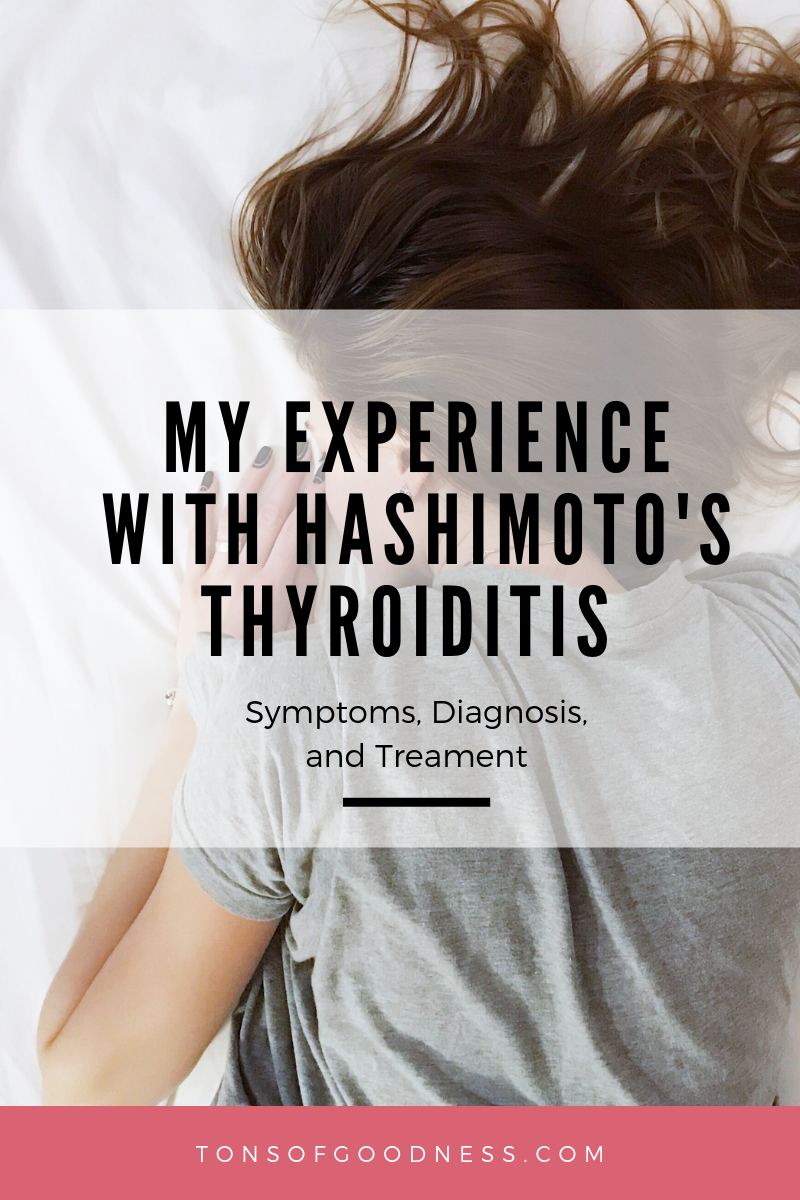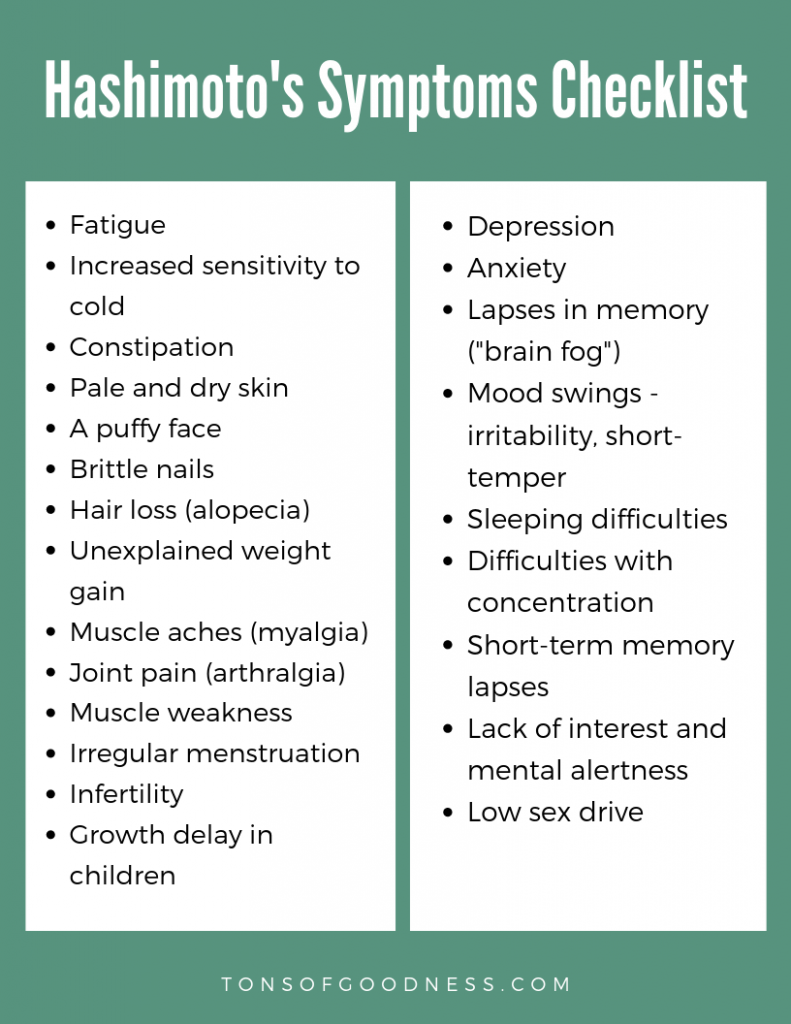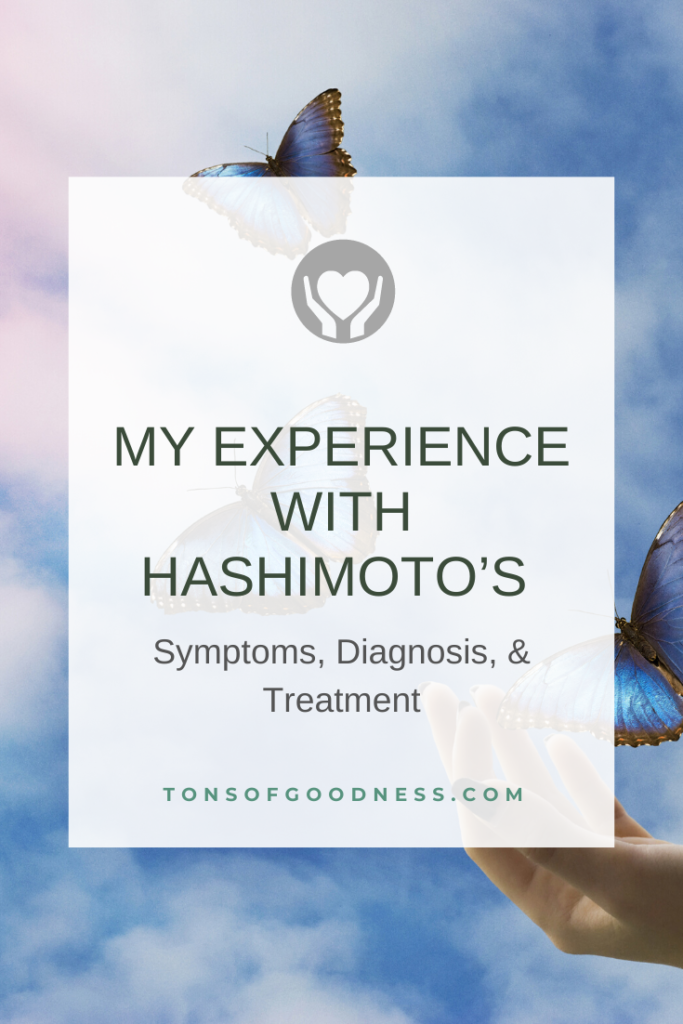

Disclosure: Some of the links in this article are affiliate links, which means that if you purchase through those links I will receive a small commission. For example, as Amazon Associate, I earn from qualifying purchases. If you decide to use these links, thank you!
I have been on a bit of a hiatus due to work, family, and life in general. Thankfully, the school year is coming to an end. I am excited to finally wrap up my school psychology job and get back to writing. A topic that I have been wanting to write about is Hashimoto’s symptoms, diagnosis, and treatment.
I haven’t written about this in the past because it’s such an elusive condition. I say elusive because there are so many different viewpoints about the best treatment for this condition, from special diets to medication to exercise. It’s also mysterious because there is not just one root cause and the symptoms vary from person to person.
I feel, however, that even though I don’t have all of the answers I would love to share my story and what has helped me live with this condition. I think it’s also important to raise awareness so that others can identify if they have this condition, seek treatment sooner, and finally get their life back.
Hashimoto’s thyroiditis is an autoimmune disorder and is the most common cause of hypothyroidism. It is an autoimmune disorder in which antibodies directed against the thyroid gland lead to chronic inflammation. Over time, this results in an impaired ability of the thyroid gland to produce thyroid hormones. This leads to a gradual decline in function and eventually an underactive thyroid (hypothyroidism).
Hypothyroidism occurs when the
The symptoms of Hashimoto’s can be debilitating. Some of the early symptoms I experienced include extreme fatigue, brain fog, and muscle aches. I began to have symptoms as early as middle school. I couldn’t seem to ever get enough sleep to feel functional, so I got through life by taking a lot of naps. In college and grad school, I used large amounts of caffeine to keep me alert. Still, I felt like I was in a fog and missing out. I was in such a fog for so much of my life that my memory of those years is also cloudy.

Later in
There is no one specific sign or symptom that is exclusive to Hashimoto’s and the symptoms vary from person to person.

I think that it is vital to know that thyroid conditions can result in mental health conditions. Having a thyroid condition can make you feel more emotional than you felt before. You may find that your mood changes, sometimes rapidly and unpredictably.
It’s common for individuals with Hashimoto’s and hypothyroidism to experience anxiety (a feeling of nervousness, with butterflies, heart racing and trembling), depression, mood swings, and sleeping difficulties.
As I mentioned previously, brain fog is a huge cognitive symptom of Hashimoto’s. Brain fog can result in difficulties with concentration, short-term memory lapses, and lack of interest and mental alertness.
How to Clear Brain Fog and Reclaim Your Day
Hashimoto’s thyroiditis results from a malfunction in the immune system. When working properly, the immune system is designed to protect the body against invaders such as bacteria, viruses, and other foreign substances. The immune system of someone with Hashimoto’s thyroiditis mistakenly recognizes normal thyroid cells as foreign tissue, and it produces antibodies that may destroy these cells.
It is not entirely clear why the immune system, which is supposed to defend the body, sometimes turns against the body’s healthy tissues. But what is understood is that there are some factors that may make you more susceptible to this disease. These factors may include:
There are several inherited genes associated with Hashimoto’s disease, but the two most common are HLA-DR3 and HLA-DR5. Having one of these genes does not mean a person will definitely develop Hashimoto’s, it just means that their risk is increased.
Having another autoimmune disease is a risk factor for developing Hashimoto’s disease. And, unfortunately, if you have Hashimoto’s you are at risk for developing other autoimmune conditions if left untreated.
Lifestyle factors can contribute to the development of Hashimoto’s disease, specifically smoking and stress. Other stressors associated with most autoimmune diseases include lack of sleep, eating a low-calorie diet, nutritional deficiencies, and lack of activity. When the body isn’t getting the nutrients and other essentials it needs for optimal function, it overcompensates from other body systems, especially the immune system, which overacts in response.
Although about 70% of the risk for developing autoimmune thyroid disease is attributable to genetic background, environmental triggers are thought to play a role in the development of autoimmune thyroid disease in susceptible individuals. These can include compounds in drinking water, pesticides and herbicides, toxins in common household products, and heavy metal.
Pregnancy impacts thyroid hormones in a number of ways. It is possible that some women will develop antibodies to their own thyroid during or after pregnancy. This is called postpartum autoimmune thyroid syndrome or postpartum thyroiditis and it’s said to be the most common thyroid disease in the postpartum period with an incidence between five to nine percent.
I rarely hear of anyone figuring out from their first visit to the doctor that they have a diagnosis of Hashimoto’s. I sought help from multiple doctors and multiple visits to each before figuring out what was going on with me. What happened at the previous visits? My thyroid levels were checked and were found to be “normal”, my iron levels were checked and were found to be “normal”. When I spoke about weight gain concerns there was no response other than, “well, you are in a range normal for your height”. So, all was normal according to their data, but I was definitely NOT feeling normal. One of the last doctor’s I saw humored me and started me on a low dose of Synthroid for subclinical hypothyroidism (the go-to thyroid hormone replacement medication). This did not do a thing for me.
Finally, I sought out help from Allison Dunaway, who is a Registered and Licensed Dietitian & Certified LEAP Therapist. I contacted her to see if maybe there were dietary changes that I could make to help me feel better. My daughter was a year old at the time and I felt like I was missing out on her life. I was able to function enough to take good care of her. However, I was in a cloud and so tired that I was frightened that my memories and experiences with her would all turn in to a blur like everything else.
I am so thankful for Allison and always will be. During my first meeting with
She gave me a list of blood tests to request from my doctor. These included a TSH test, free T3, free T4, thyroid
Finally discovering what was going on with me was a relief to say the least. Also, finding someone knowledgeable about my condition was life-changing.
The first thing that I did was change my diet. It is important to let your system rest and your gut heal if you want to normalize your immune system. So, I participated in the Mediator Release Test (MRT) which identifies food sensitivities. The information from this test is used to design a personalized, multi-phased elimination diet which
I want to point out that there are tons of elimination diets out there, but this is different in that it is custom to you. As you can see in the list below I was reactive to things I would have never suspected like cucumber, parsley, and strawberry. I would not have know this without completing this test.

Just to clarify, food sensitivities are different than food allergies. Food allergies are generated by the IgE branch of the immune system. Reactions will usually show up within minutes of ingesting the reactive food. Shellfish and nuts are the most common foods that result in an IgE food allergy.
Food sensitivities, on the other hand, are governed by different parts of the immune system: the IgA, IgM
I also eliminated gluten and dairy from my diet as part of my treatment. These are two of the most common foods to avoid because they increase intestinal permeability, disrupt the balance of healthy gut bacteria, and contribute to Hashimoto’s thyroiditis. Many people find immediate alleviation of symptoms simply by eliminating one or both of these foods. For others, relief may be only partial or take longer to become apparent.
In addition to changing my diet, I also sought out a physician that specializes in functional medicine. She analyzed my blood test results to determine the optimal treatment for me. Like I said earlier, Synthroid did not work for me and it doesn’t for many people with Hashimoto’s. Hormone therapy options other than Synthroid include Cytomel (liothyronine), a combination of T4 and T3, or desiccated
With the combination of thyroid hormone, dietary changes, and lifestyle changes I am feeling better and am more able to function throughout the day. Not to say that I don’t have to be careful and be super aware of things that trigger my symptoms. Sometimes they are difficult to avoid and I’ll go weeks before I can feel normal again.
Although Hashimoto’s is incurable, it can be put into remission through dietary changes, medication, and lifestyle changes. Remission might not reverse tissue damage that has already occurred, but it can bring back the quality of life that was once lost to Hashimoto’s Disease.

There is so much more
You may also like:
The Step-by-Step Guide to Exercise with Hashimoto’s Thyroiditis
How to Clear Brain Fog and Reclaim Your Day

